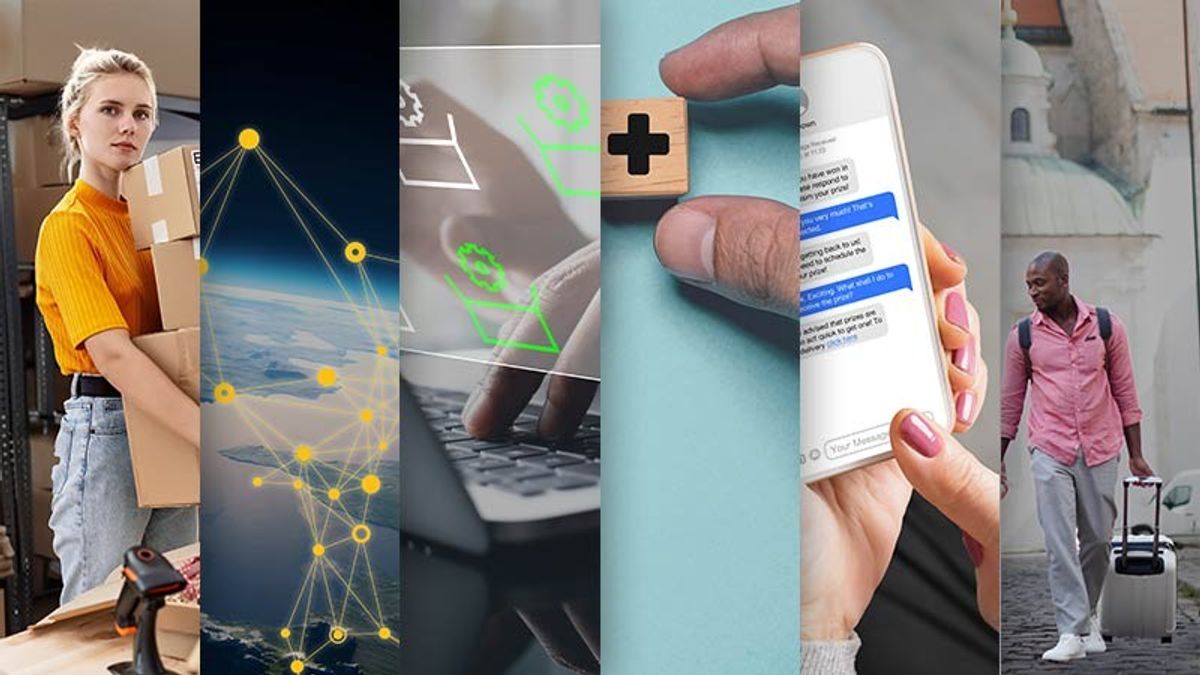Below is an article originally written by Visa. Go to Visa's company page on PowerToFly to see their open positions and learn more.
The payments industry is nothing, if not constantly changing. And 2024 promises to bring its fair share of change.
At a high level, we expect a kind of inversion of accepted norms from years past: once solely-local businesses to expand globally, formerly closed-loop and proprietary tech to open, sometimes generic solutions to become increasingly tailored and once-siloed networks to become increasingly interoperable. Add to this the transformative power of AI and the surging return of consumer travel, and you have a good sense of the forces shaping payments in 2024.
1. Creators, SMBs go global.
From the creator and sharing economies to ecommerce and traditional brick-and-mortar businesses, 2024 is the year SMBs go global. For businesses of all sizes, the mindset has largely shifted beyond the local neighborhood to the global digital economy.
Nearly 4 in 5 SMBs (79%) cited selling across borders as a focus for their growth, and consumers are ready for it. Some 72% of consumers said they are comfortable buying from businesses in other countries.
Digital payments are transforming opportunities for SMBs to pay and be paid, making it possible to reach new audiences, easily accept secure payments, track and monitor spending, increase security and safety, improve efficiencies and grow like never before. And with payments innovations allowing for access to earnings in real-time, making it convenient to receive consumer and B2B payments, getting paid has never been easier. Payment solutions like virtual cards are also enabling SMBs with the cashflow, purchasing power and expense management capabilities needed to thrive in today’s digital-first world.
In 2024, we expect small and micro businesses will benefit from increased digitization that both speeds and protects payments, making expansion beyond geographical borders easier than ever before.
2. Interoperability gains steam.
The convenience and speed of digital payments have transformed the way we move money, both domestically and across borders. But the explosion of networks and payment methods — from money-moving apps and wallets, to blockchains, together with legacy infrastructure — has made for a splintered, fragmented experience. Each solution often operates within its own, siloed ecosystem.
But that is beginning to change. With payments players prioritizing interoperability, we will soon see a more seamless future-state of global money movement — one where paying across services is as seamless as using any one service, breaking down barriers and bringing a myriad of benefits to end users, FIs and their corporate clients, fintech enablers and app providers alike.
In 2024, we will continue to see collaboration across the payments ecosystem — amongst banks, FIs, merchants, technology providers/enablers and issuers — bringing us greater global financial inclusion, accessibility, cross-system compatibility and interoperability. We expect to see more technologies developed to help both consumers and businesses navigate the intricacies and complexities of cross-border money movement.
3. Open infrastructure solves hard payments problems, making commerce easier.
Today, as consumers, if a tech solution doesn’t suit us, we walk away from it — because we know a better, easier, more suitable option likely exists. And payments are not immune to these kinds of expectations.
In 2024, we expect a notable shift to more modular, platform-agnostic infrastructure in payments technology, making it possible for businesses to more easily provide the kind of experiences consumers have grown to expect.
What does that mean in practice? It means businesses being able to use the products and services they need as they need them. Don’t have a good token solution? Add one to your existing tech stack. Need a better omni-channel experience? Implement one without unseating your entire payments gateway. Network-agnostic payments services create plug-and-play solutions for truly complex problems.
Not only will we see more payments companies transform their infrastructure with these kinds of open tools, but more and more businesses will benefit from these new layers and capabilities. As a result, the world of commerce will become easier to operate.
4. Consumers expect tailored solutions. For merchants, banks and FIs, services make them possible.
Consumer expectations are shaping more than payments infrastructure. Consumers increasingly expect an experience that is tailored to them. Whether you are a merchant or a bank, to give consumers the experience they expect — quickly — it can take scarce tech and engineering resources, or bring greater complexity than they may be prepared to take on. As a result, more businesses are looking toward partner-based solutions or managed services to close the gap.
Value-added services built through partnerships can help companies give consumers what they want, without having to disrupt their businesses or develop new capabilities in-house — efforts that can be costly, time-consuming and still don’t guarantee success.
With a growing reliance on digital payments, there’s increased urgency around these decisions — and the decisions merchants, banks and FIs make today will likely be felt throughout their business years into the future. These improvements can serve as a vehicle to unlock the full potential and efficiency of a business, helping build trust with customers and move faster during a time of rapid change.
5. AI brings new opportunities — and challenges — to payments.
A little more than a year after LLMs burst onto the scene, one of the most exciting future applications of generative AI is in fighting fraud — specifically, in the opportunity to analyze and learn from an unprecedented amount of data compared to traditional predictive models. The next generation of AI has the potential to take insights from multiple domains and generate new insights, helping to train fraud tools to make more informed and accurate decisions to differentiate fraudulent transactions from legitimate purchases.
Generative AI will also transform the ways we work, improving product, data structure, models, operations and infrastructure. At Visa, we are already seeing a net coding productivity improvement of 30%, as time consuming/repetitive tasks (e.g. boiler plate code generation) are handled very well by Gen AI tools, freeing engineers to focus on producing high-value code that results in market differentiating products.
AI also brings new challenges to payments. Generative AI tools will help fraudsters create more realistic phishing scams, making it harder for consumers to spot the once characteristic spelling and grammar errors. All of this raises the bar for business and consumers, who will need to adapt to an evolving threat landscape.
6. Travel returns with a vengeance.
With the worst of the pandemic in the rearview, travel is back, and momentum is expected to continue in the coming months. What’s driving the spike? A yearning for relaxation and stress-free holidays, after years of COVID-driven, we’ll say, inconvenience.
According to Visa’s Global Travel Intentions Study 2023, over 70 percent of travelers are aware of the rising cost of vacation, but most are undeterred, with only 4% planning to cut back on travel plans. Globally, travelers are looking forward to an average of 2 leisure trips over the next 12 months, with affluent travelers banking on even more.
But not everything about travel is an escape from the pandemic-era. A preference for flexibility in travel arrangements remains, and a priority placed on safety and cleanliness have become clear drivers when it comes to choosing accommodations.
Apart from smaller ticket items, travelers are mainly opting for safe, digital, and touch-free payments experiences. And while many tourists are aware of sustainable travel and tourism, research conducted by Visa and Oxford Economics found that 41% feel they lack information about sustainable travel options, and 36% feel that available information is not credible. Solutions like Visa’s partnership with Ecolytiq, where consumers can see estimated carbon emissions based on their transactions — and Travalyst, a global sustainable travel initiative that presents consumers with more consistent and visible sustainability information, starting with accommodations and aviation — can help close the gap.
Change can be good
At the end of the day, change can be good, particularly when it means better outcomes for consumers, businesses, communities and economies. And if change means a world where small businesses can increasingly serve a global marketplace, where open-infrastructure and managed services mean banks, FIs, businesses and consumers get the solutions the need — and where moving value across networks is as easy, seamless and secure as moving it across a single network — then 2024 can’t come soon enough.




